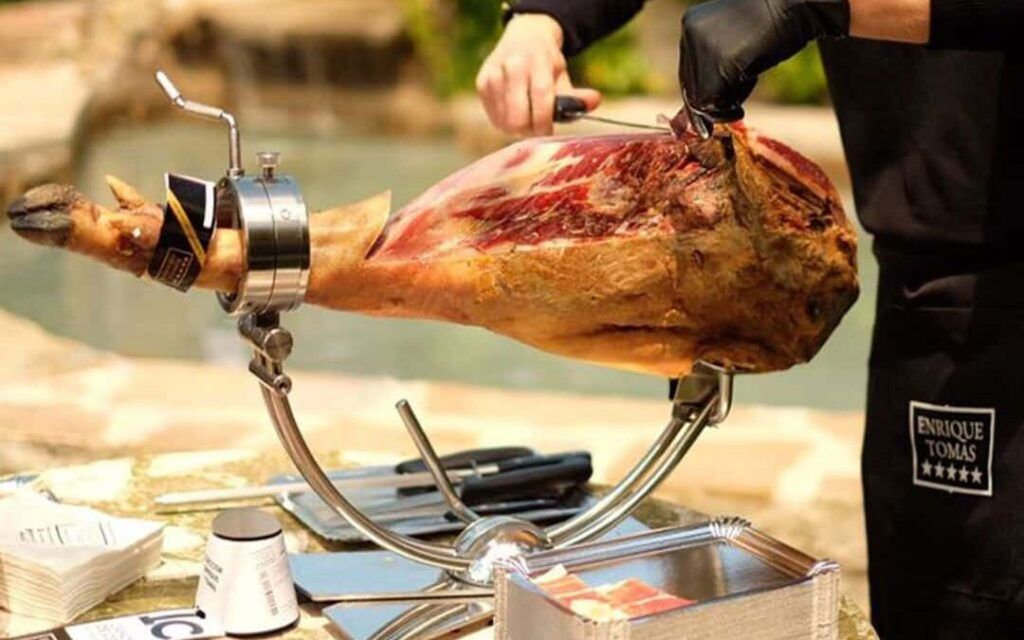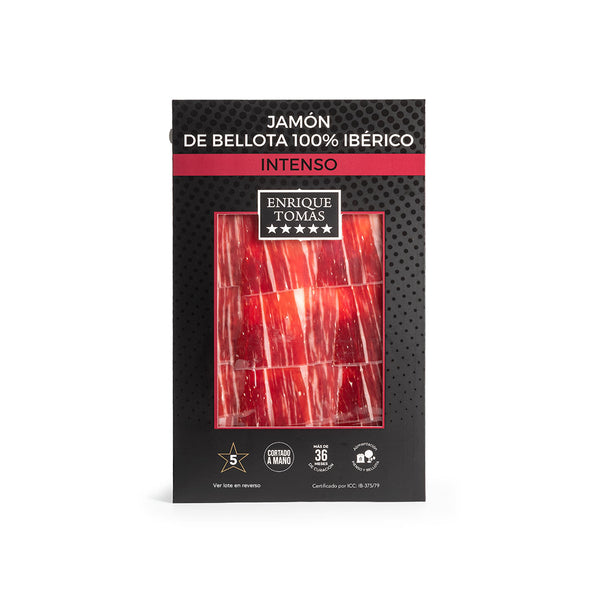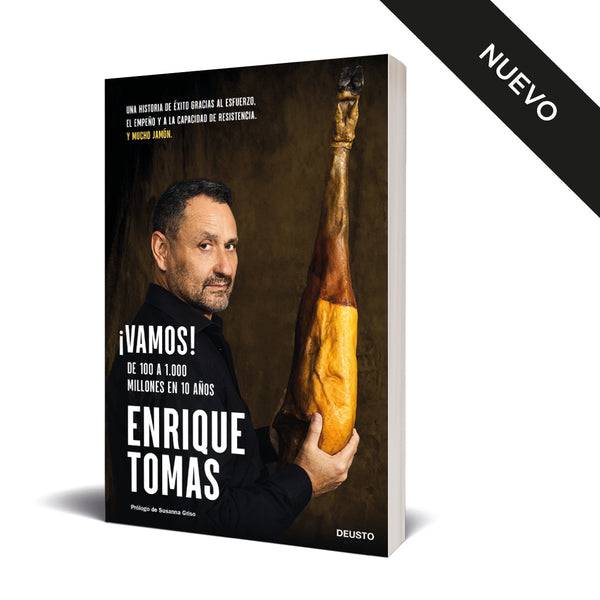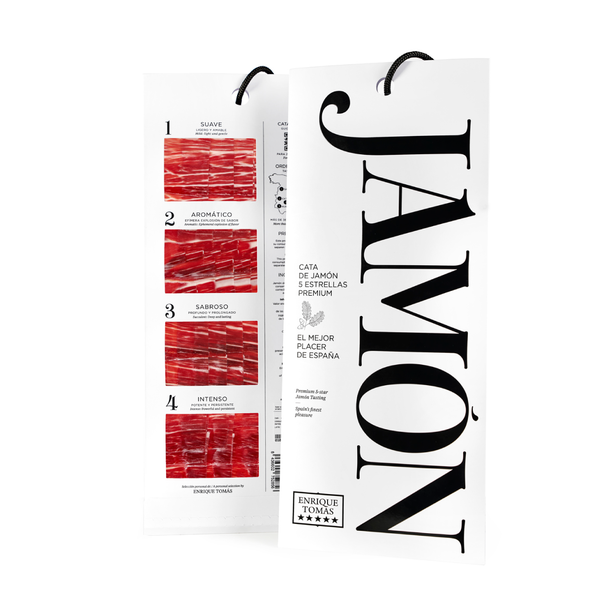
What is the yield of a Jamón leg
When we talk about yield, we refer to the percentage of clean ham that can be consumed, without fat or bones, once the piece has been sliced. However, it's important to note that this percentage varies depending on the breed of the pig, its diet, and the type of piece, whether it's shoulder or ham.
At Enrique Tomás, we understand that each ham is unique, and the yield can differ both among shoulders and among hams, even if they are of the same quality. Our priority is to slice optimally and make the most of each cured piece, but it's crucial to understand that this is not an exact science.
Ham Yield According to Breed and Diet
Yield will depend on several factors, so it's very difficult to determine specific percentages. Therefore, we will provide approximate estimates based on the breed and diet of the pig from which the ham (hind leg) and shoulder (front leg) come.

Pig Anatomy (Ham and Shoulder)
Non-Iberian Ham or Shoulder
This type of ham is known as Gran Reserva Ham at Enrique Tomás. It comes from a white pig, primarily of the Duroc breed.- Gran Reserva Ham: from 52% to 37%
- Gran Reserva Shoulder: from 43% to 32%

Gran Reserva Ham by Enrique Tomás
Iberian Ham or Shoulder, Both Fed and Free-Range
Iberian ham is unique in the world, as its name suggests; it's only raised and produced on the Iberian Peninsula. Its most important and differentiating characteristic compared to non-Iberian ham is its ability to infiltrate fat into the muscle, making its meat juicier.- Iberian Ham (Both Fed and Free-Range) : from 44% to 36%
- Iberian Shoulder (Both Fed and Free-Range): from 40% to 31%

Iberian Ham (Both Fed and Free-Range) by Enrique Tomás
Iberian Acorn-Fed Ham or Shoulder
Another characteristic of the Iberian pig is that the purer the Iberian breed, meaning the higher its racial percentage, the lower the yield will be.
In the case of acorn-fed Iberian ham, this becomes more evident, as it usually has more external fat and consequently more waste. However, its marbling between the slices, an indicator of its fat-infiltrating capacity, will have a more intense reddish sheen due to the oil consumed from acorns.
- 50% and 75% Acorn-Fed Ham (Iberian Breed): from 42% to 36%
- 100% Acorn-Fed Ham (Iberian Breed): from 40% to 35%
- 50% and 75% Acorn-Fed Shoulder: from 35% to 30%
- 100% Acorn-Fed Shoulder: from 33% to 28%

The Five Types of Ham by Enrique Tomás
How to Slice a Ham
How to Slice a Shoulder
The Way You Slice Your Piece
Lastly, we've discussed the yield of ham and explained that, depending on the weight of a piece, you'll get more or less meat, but keep in mind that this also depends on how it's sliced.
Poor slicing can even change the taste from one slice to another, even if they come from the same piece. Precise and even slicing with a ham knife will be crucial to make the most of the piece and, of course, to ensure it tastes as it should.
Finger-Licking Good!
We've been specialists in ham for over thirty years, and, as you can imagine, we have the best slicers. If, for any reason, you have ham or shoulder at home and want to have it fully sliced, bring it to any of our establishments. Whether you bought it in one of our stores or not, we'll slice it and prepare it in vacuum-sealed packs to make the most of it.

Have It Sliced by Experts
When you buy ham from our online store, you can also choose the option of sliced pieces, ham or shoulder, if you're not confident in your slicing technique and prefer to ensure you make the most of every bit of ham. Our expert slicers will get to work to prepare your piece neatly for you.This way, you'll get all the meat and have it ready in the most convenient manner. When you crave some ham, just open one of your packs, wait for the slices to separate, and enjoy.
This pleasure is unique!













